Research
The structure and function of ecosystems are changing due to anthropogenic factors such as climate change, nitrogen deposition, and species invasion. Our research program aims to improve our understanding of plant, microbial and soil dynamics to better predict, mitigate, and adapt to the effects of these global environmental changes. We use observational and experimental studies in the field and laboratory to study mechanisms driving greenhouse gas emissions and rates of chemical transformations in natural and managed ecosystems. We also develop novel analytical techniques and methodological approaches to enable our research program which falls within two major themes:
1. Controls on Redox-Sensitive Biogeochemical Processes
We quantify rates and characterize drivers of biogeochemical processes that are overlooked or challenging to measure in upland terrestrial ecosystems, where soils rarely, if ever, inundate with water. The biogeochemical processes responsible for soil greenhouse gas dynamics and nutrient cycling in terrestrial ecosystems are based mostly on the transfer of electrons in reduction-oxidation (redox) reactions which yield energy in microbial metabolism. When low oxygen availability limits aerobic respiration, many soil microbes can switch to anaerobic metabolisms. Microbial activity theoretically follows a sequence based on the amount of energy released by the transfer of electrons to (that is, reduction of) different electron acceptors, with oxygen being the electron acceptor at top of this redox ladder. In reality, soil is a heterogeneous matrix that can simultaneously support aerobic and anaerobic metabolisms. While this paradigm is now widely accepted, the mechanisms regulating the occurrence of anaerobic processes in unsaturated, oxic upland soils are not yet resolved. We must understand the controls on redox-sensitive soil biogeochemical processes to accurately predict how land management practices and future global change will affect soil greenhouse gas emissions and its feedback effects on climate change, as well as soil nutrient cycling and its implications for crop production and water pollution.
Effects of Rainfall Intensification on Soil Greenhouse Gas Emissions in the Midwest
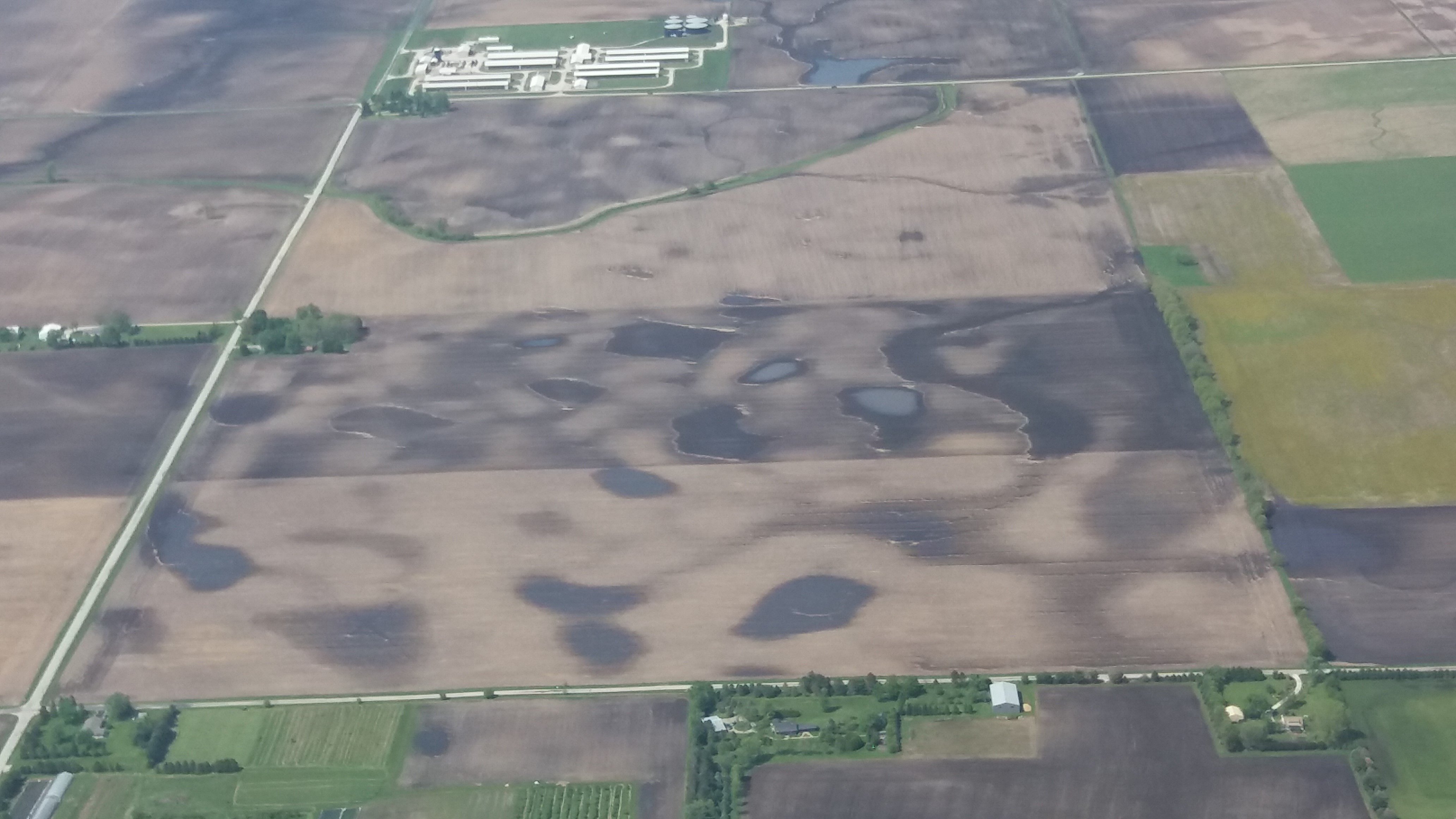
The intensity and frequency of rainfall events in the Midwest, U.S. are expected to increase as a result of climate change-induced alterations to the water cycle. This can lead to more frequent ponding of soils with unknown effects on the regional global warming potential from soil greenhouse gas emissions. Midwest agricultural soils are large sources of the potent greenhouse gas, nitrous oxide, which could be reduced to the inert gas, dinitrogen, via denitrification under anaerobic soil conditions caused by ponding. However, this decrease in global warming potential by reductions in soil nitrous oxide emissions could be offset by increases in soil emissions of another greenhouse gas, methane, which are high in flooded ecosystems such as wetlands and rice paddies.
A challenge in studying soil nitrous oxide and methane dynamics is that both of these gases can also be consumed by soil microbes such that the net soil-atmosphere exchange of the gases can mask patterns in the gross production and consumption process rates, as my prior work has shown (Yang et al. 2016). Our research program is uniquely poised to advance our mechanistic understanding of soil nitrous oxide and methane dynamics because Dr. Yang previously developed an innovative stable isotope trace gas pool dilution technique that enables us to simultaneously measure gross production and consumption of these gases in situ in the field and ex situ in the laboratory (Yang et al. 2011).

Research led by former PhD student, Alex Krichels, has revealed that long-term soil drainage patterns can predict when and where high soil nitrous oxide emissions occur in Midwestern agricultural fields. Well- and poorly-drained areas of the same fields differ in soil microbial community composition and soil properties, such as soil organic carbon content, “reactive” short-range order iron concentrations, and pH (Suriyavirun et al., 2019). These soil drainage legacy effects mediate the response of soil nitrous oxide emissions to contemporary conditions, such that poorly-drained, topographic depressions act as nitrous oxide hot spots in-between heavy rain events and well-drained, more elevated areas act as hot spots immediately after these events (Krichels et al., 2019). Under cold soil temperatures, limited heterotrophic respiration allows dissolved oxygen to persist in soil pore water to suppress production of nitrous oxide, thereby limiting the development of nitrous oxide hot spots and hot moments (Krichels and Yang 2019). Moreover, iron redox reactions contribute to the observed microtopographic variation in soil carbon dioxide and nitrous oxide emissions (Krichels et al. 2019).
Controls on Dissimilatory Nitrate Reduction to Ammonium in Upland Soils
Microbially mediated dissimilatory nitrate reduction to ammonium (DNRA) plays a pivotal role in regulating ecosystem nitrogen retention versus loss. By converting nitrate to ammonium, DNRA retains nitrogen in ecosystems to support primary productivity, reduces nitrate leaching to ground- and surface waters, and competes with denitrification to decrease gaseous dinitrogen and nitrous oxide losses. Global change factors or land management practices that affect DNRA will, therefore, have cascading effects through the ecosystem nitrogen cycle. Despite its importance, DNRA is generally disregarded in upland terrestrial ecosystems because of the misconception that the process is restricted to reducing conditions typically found in flooded environments. Dr. Yang’s prior work has demonstrated the occurrence of DNRA in oxic soils from a diverse set of biomes (Yang et al. 2017). Furthermore, Dr. Yang has shown that DNRA rates can be higher under oxic conditions than anoxic conditions (Yang et al. 2015).
In collaboration with Dr. Angela Kent, a microbial ecologist in the UIUC Department of Natural Resources and Environmental Sciences, we are currently surveying the environmental and genetic potential for DNRA in many existing agricultural field trials that provide contrasting soil conditions (e.g., annual corn and soybean crops versus perennial bioenergy crops, till versus no-till, fertilized versus unfertilized, etc.). We are also working with Dr. Rob Sanford, an environmental microbiologist in the UIUC Geology Department, and Dr. Joanne Chee-Sanford, a microbiologist in the USDA Agricultural Research Service, to explore the mechanisms leading to the unexpected competitiveness of DNRA under oxic soil conditions.
Visit The Story of DNRA created by graduate student, Sada Egenriether, to present our research findings which are currently in manuscript preparation.
Funding: U.S. Department of Agriculture NIFA; Illinois Nutrient Research and Education Council; U.S. National Science Foundation
Iron-mediated Biogeochemistry in Terrestrial Ecosystems
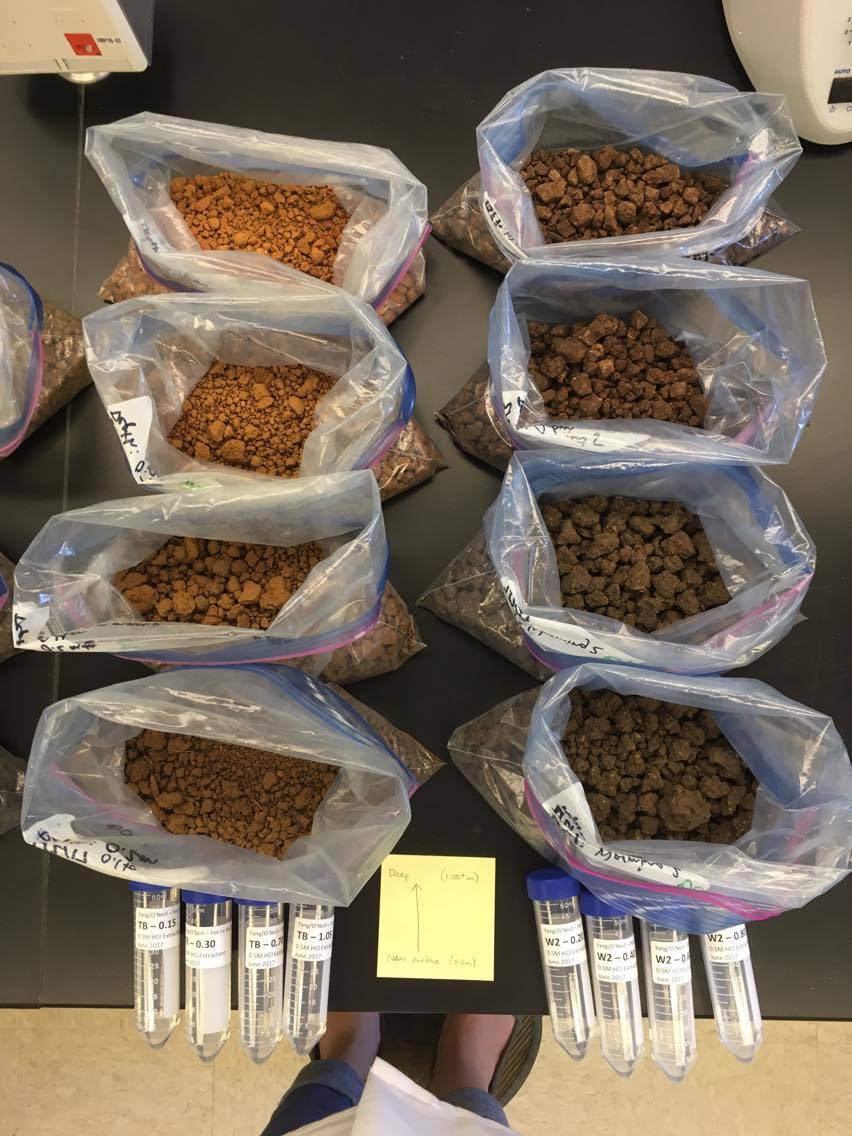
Soils are generally rich in iron, the fourth most abundant element in Earth’s crust. Changes in the redox state of iron can be coupled to the biogeochemical cycling of carbon, nitrogen, and phosphorus through both biotic and abiotic processes. For example, Dr. Yang and colleagues discovered a new pathway for nitrogen loss from terrestrial ecosystems, iron reduction coupled to anaerobic ammonium oxidation (Yang et al. 2012). This pathway (termed Feammox) can lead to the production of nitrite or nitrate, which can contribute to nitrous oxide (N2O) emissions if denitrified. However, it can also lead directly to dinitrogen (N2) production from ammonium, thus short circuiting the soil nitrogen cycle and bypassing the potential for N2O production.
The importance of iron in catalyzing redox-driven biogeochemical cycling has been underappreciated in terrestrial ecosystems because they are typically not considered to harbor the anaerobic conditions under which iron reduction occurs. However, soils can experience anaerobic conditions following rain events or in microsites of high biological oxygen consumption. Research on iron-mediated biogeochemistry in terrestrial ecosystems is currently hampered by the lack of general understanding of where iron reduction is important. We are conducting a continental-scale survey of soils collected from the NSF Critical Zone Observatory (CZO) Network, which spans diverse ecosystems across the contiguous U.S. and Puerto Rico. The main objective of this study is to elucidate the controls on potential iron reduction rates by assessing soils that exhibit wide ranges in iron mineralogy and abundance, soil carbon quantity and quality, pH, microbial community composition, and other possible explanatory variables.
Funding: UIUC Campus Research Board
2. Plant Community Composition Effects on Biogeochemical Processes
Plant-soil-microbe interactions regulate biogeochemical processes in terrestrial ecosystems yet the mechanisms linking these interactions to ecosystem function are not well characterized. We investigate these mechanisms related to carbon and nitrogen cycling in a variety of contexts.
Plant-Soil-Microbe Interactions in Bioenergy Cropping Systems
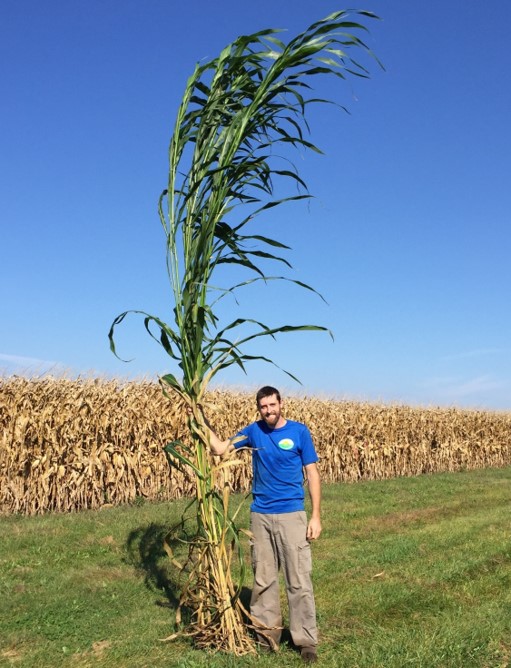
A challenge in developing ecologically and economically sustainable bioenergy and bioproducts markets is our limited ability to predict the productivity and ecosystem service production potential offered by different feedstock types grown on different soil types, in different climatic regions, and under different management practices. Therefore, a major objective of the Sustainability Theme of the Center for Advanced Bioenergy and Bioproducts Innovation (CABBI), for which Dr. Yang is the Deputy Leader, is to improve our mechanistic understanding of how plant, soil, microbe, and climate interactions mediate bioenergy crop productivity and ecosystem service production related to carbon and nitrogen biogeochemistry. Dr. Yang’s group is leading research efforts on:
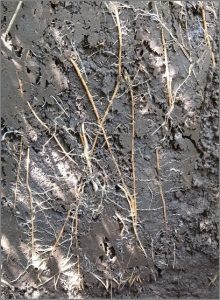
- Quantifying ecosystem scale nutrient budgets for new bioenergy crops, energy sorghum and sugarcane
- Developing biological nitrification inhibition as a nutrient retention and greenhouse gas mitigation strategy in energy sorghum agroecosystems
- Constraining biological nitrogen fixation and soil nitrogen mineralization as nitrogen sources to support miscanthus productivity
- Characterizing energy sorghum root exudate effects on soil microbial community structure and function related to soil carbon dynamics and nitrogen cycling
Funding: U.S. Department of Energy
Production Agroforestry as a Transformative Solution to Sustainable Agriculture
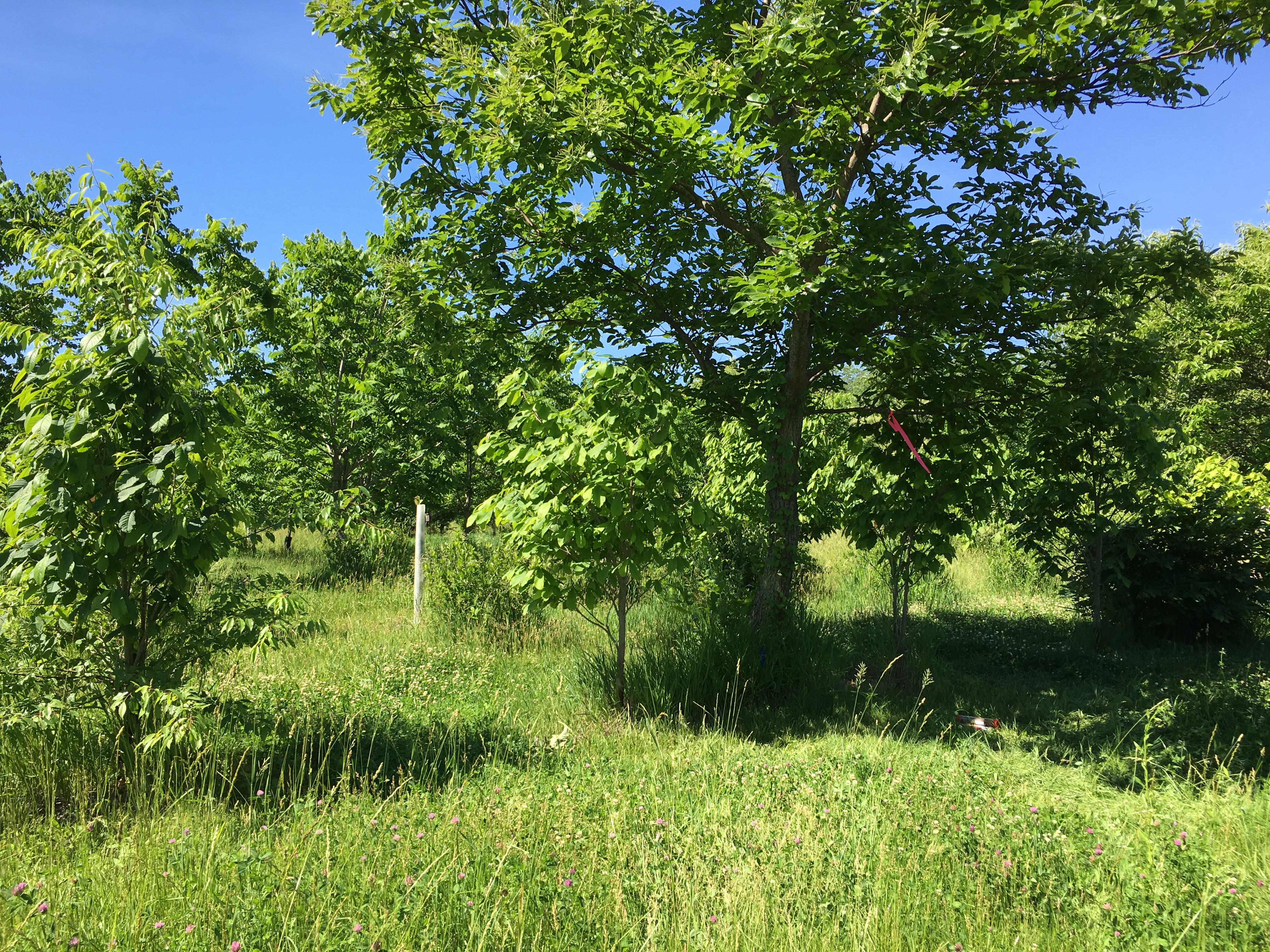
The Midwest is currently dominated by annual monocultures (corn-soybean rotations) which require high inputs of fertilizers, pesticides, and energy, resulting in a plethora of negative environmental impacts. Production agroforestry (also referred to as woody polycultures)—growing multiple tree, shrub, and herbaceous species together to produce staple food and fodder crops—is a transformative solution to the dual challenge of meeting exponentially increase global food demands and mitigating the negative environmental impacts of large-scale agriculture. Dr. Yang is a member of an interdisciplinary team awarded a seed grant in 2014 by the UIUC Institute for Sustainability, Energy, and Environment to evaluate the economic, environmental, and social aspects of the transition from corn-soy rotation to production agroforestry in the Midwest. Our group is focused on elucidating the mechanisms underlying ecosystem service enhancement by production agroforestry so that we can best guide farmers in designing and managing these systems.
We are also working with Dr. Jeremy Guest, an environmental engineer on our team, to determine how fertilization of production agroforestry systems affects the tradeoff between crop productivity and the mitigation of nutrient leaching and soil greenhouse gas emissions relative to corn-soy rotations. This three-year USDA-funded project started in 2017 was based on working farms throughout the Midwest. It also involved outreach efforts in collaboration with the non-profit organization, the Savanna Institute, including to develop PerennialMap.org as a virtual community of perennial crop farmers and researchers.
Funding: U.S. Department of Agriculture NIFA
Mycorrhizal Mediation of Forest Nutrient Cycling

Recent studies have provided strong evidence that temperate forest nutrient and carbon dynamics are mediated by plant-mycorrhizal associations, a mutualistic relationship in which plants allocate carbon belowground to mycorrhizal fungi in exchange for nutrients such as nitrogen and phosphorus. We conducted a study to determine if mycorrhizal associations mediate the response of soil carbon and nitrogen cycling to nitrogen fertilization mimicking atmospheric nitrogen deposition in a montane tropical forest in Panama. We sampled under focal tree species known to associate either with arbscular mycorrhizal fungi or ectomycorrhizal fungi in this highly diverse forest. We found distinct patterns of soil carbon storage and extracellular enzyme activity under trees associated with arbuscular- versus ecto-mycorrhizal fungi, although nitrogen addition effects were similar across all tree species. In contrast, patterns in gross rates of soil nitrogen cycling did not differ consistently by mycorrhizal association and were generally not affected by nitrogen addition.
Funding: UIUC Campus Research Board
Invasive Species Effects on Ecosystem Nitrogen Dynamics
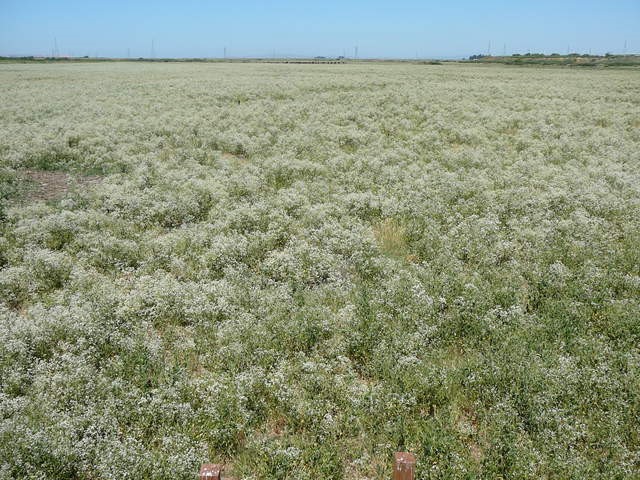
Invasive plant species can alter ecosystem nitrogen dynamics to create positive feedback loops that increase their productivity at the expense of native species. However, invasive species impacts on microbially mediated soil nitrogen cycling processes are rarely explicitly studied. Dr. Yang’s prior work, led by an undergraduate completing his senior thesis under her supervision, showed that the invasive perennial pepperweed (Lepidium latifolium) suppresses the size of the soil microbial community and gross rates of soil nitrogen cycling at peak growth, when plant nitrogen demand is high; conversely, pepperweed stimulates them after senescence when nitrogen-rich litter is returned to the soil (Portier et al., 2019).
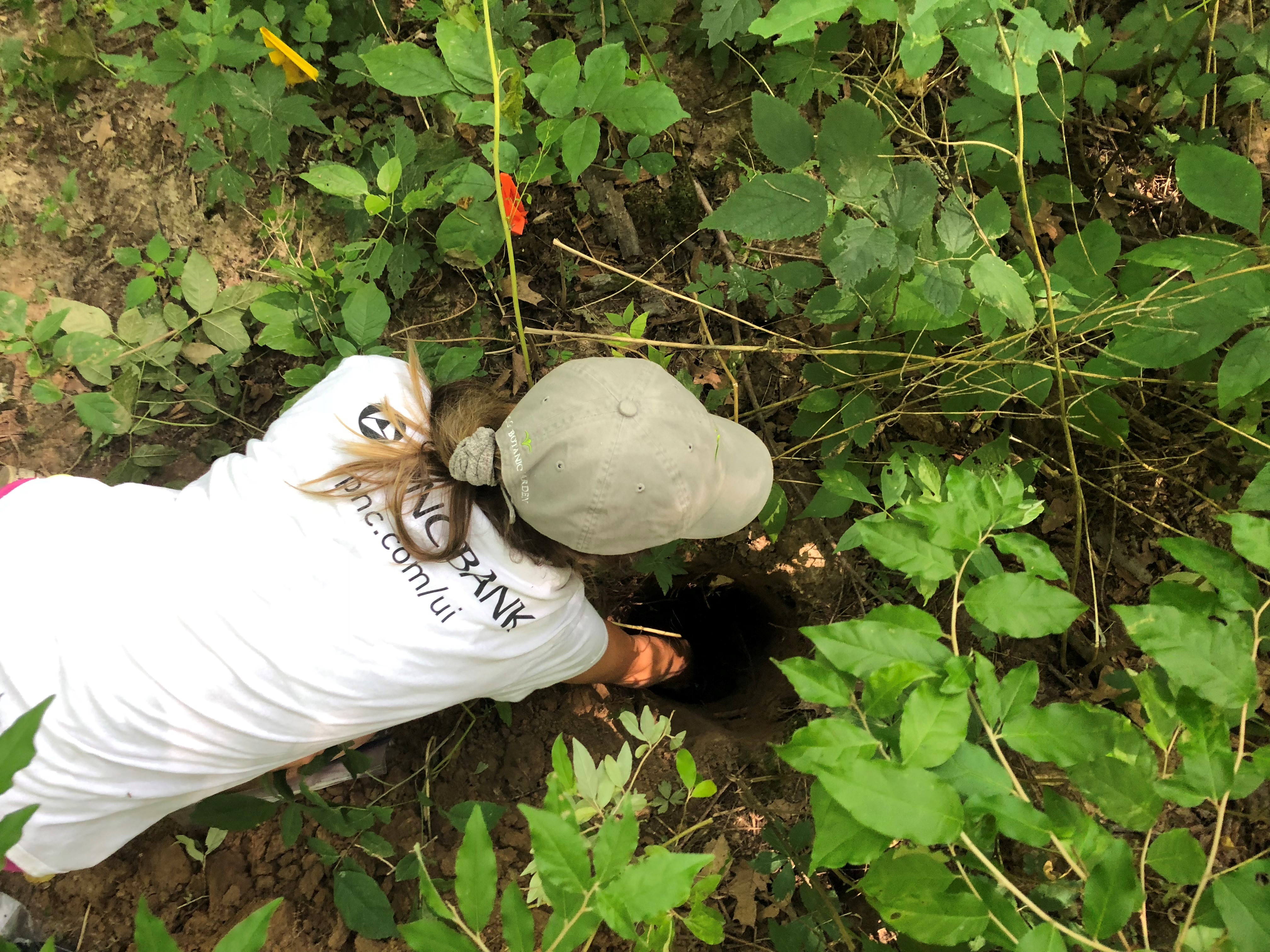
We are currently collaborating with Dr. Tony Yannarell, a microbial ecologist in the UIUC Department of Natural Resources and Environmental Sciences, to determine if and how garlic mustard (Alliaria petiolata), a prevalent invader of understory communities in North American forests, disrupts forest nitrogen cycling by inhibiting the mutualistic fungi of trees and understory plants.
Funding: U.S. Department of Agriculture McIntire-Stennis